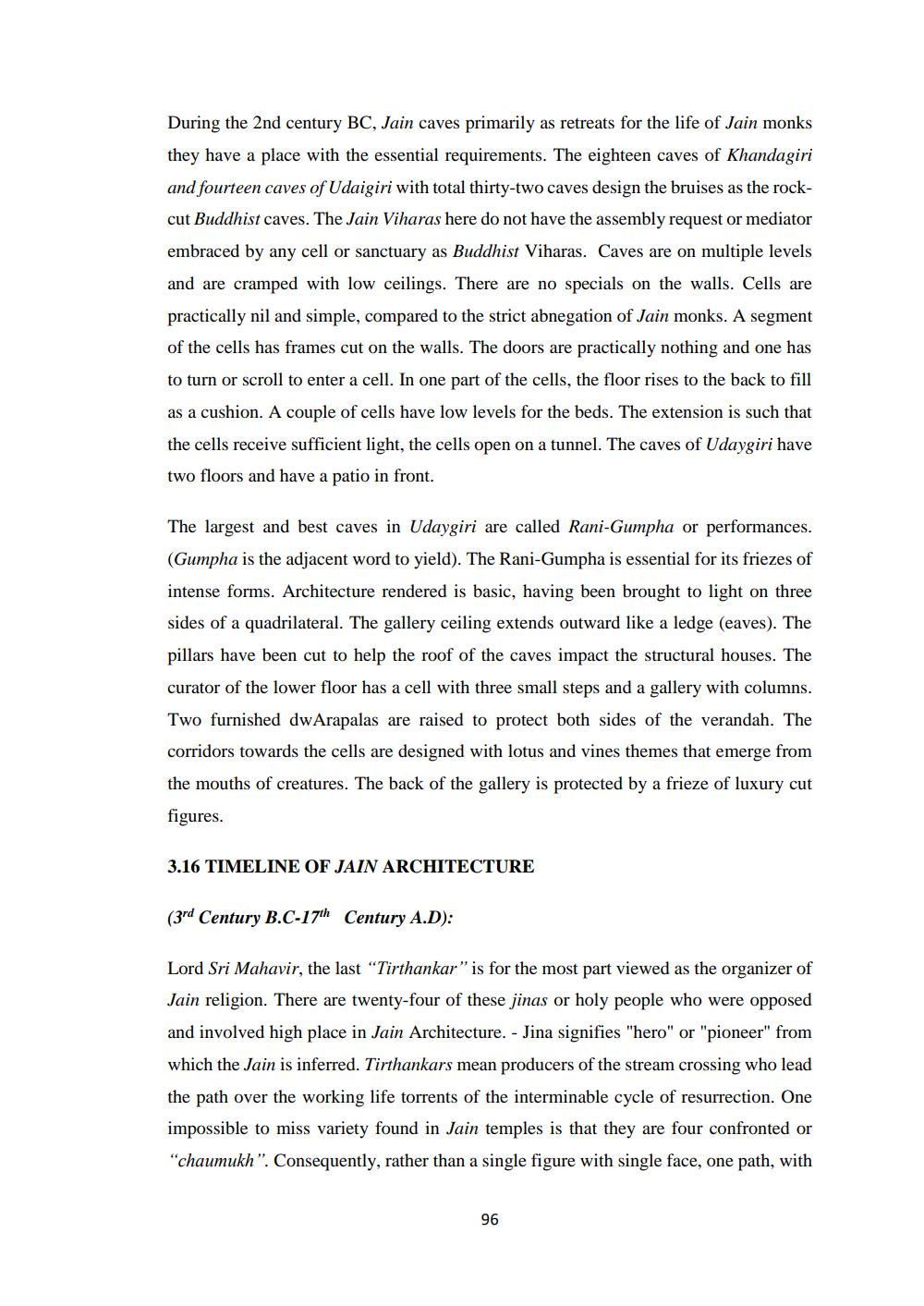________________
During the 2nd century BC, Jain caves primarily as retreats for the life of Jain monks they have a place with the essential requirements. The eighteen caves of Khandagiri and fourteen caves of Udaigiri with total thirty-two caves design the bruises as the rockcut Buddhist caves. The Jain Viharas here do not have the assembly request or mediator embraced by any cell or sanctuary as Buddhist Viharas. Caves are on multiple levels and are cramped with low ceilings. There are no specials on the walls. Cells are practically nil and simple, compared to the strict abnegation of Jain monks. A segment of the cells has frames cut on the walls. The doors are practically nothing and one has to turn or scroll to enter a cell. In one part of the cells, the floor rises to the back to fill as a cushion. A couple of cells have low levels for the beds. The extension is such that the cells receive sufficient light, the cells open on a tunnel. The caves of Udaygiri have two floors and have a patio in front.
The largest and best caves in Udaygiri are called Rani-Gumpha or performances. (Gumpha is the adjacent word to yield). The Rani-Gumpha is essential for its friezes of intense forms. Architecture rendered is basic, having been brought to light on three sides of a quadrilateral. The gallery ceiling extends outward like a ledge (eaves). The pillars have been cut to help the roof of the caves impact the structural houses. The curator of the lower floor has a cell with three small steps and a gallery with columns. Two furnished dwArapalas are raised to protect both sides of the verandah. The corridors towards the cells are designed with lotus and vines themes that emerge from the mouths of creatures. The back of the gallery is protected by a frieze of luxury cut figures.
3.16 TIMELINE OF JAIN ARCHITECTURE
(3rd Century B.C-17th Century A.D):
Lord Sri Mahavir, the last "Tirthankar" is for the most part viewed as the organizer of Jain religion. There are twenty-four of these jinas or holy people who were opposed and involved high place in Jain Architecture. - Jina signifies "hero" or "pioneer" from which the Jain is inferred. Tirthankars mean producers of the stream crossing who lead the path over the working life torrents of the interminable cycle of resurrection. One impossible to miss variety found in Jain temples is that they are four confronted or "chaumukh". Consequently, rather than a single figure with single face, one path, with
96




